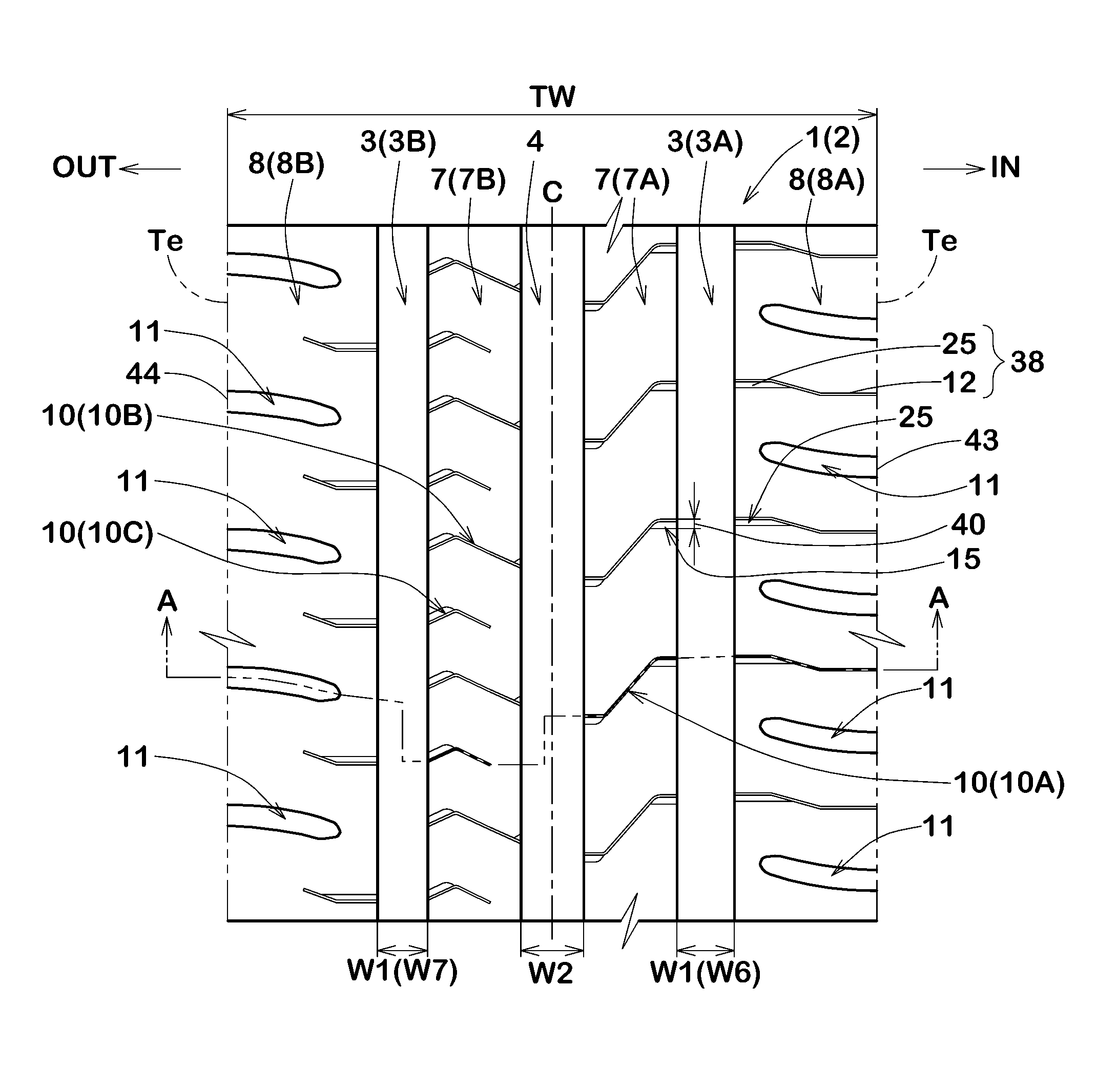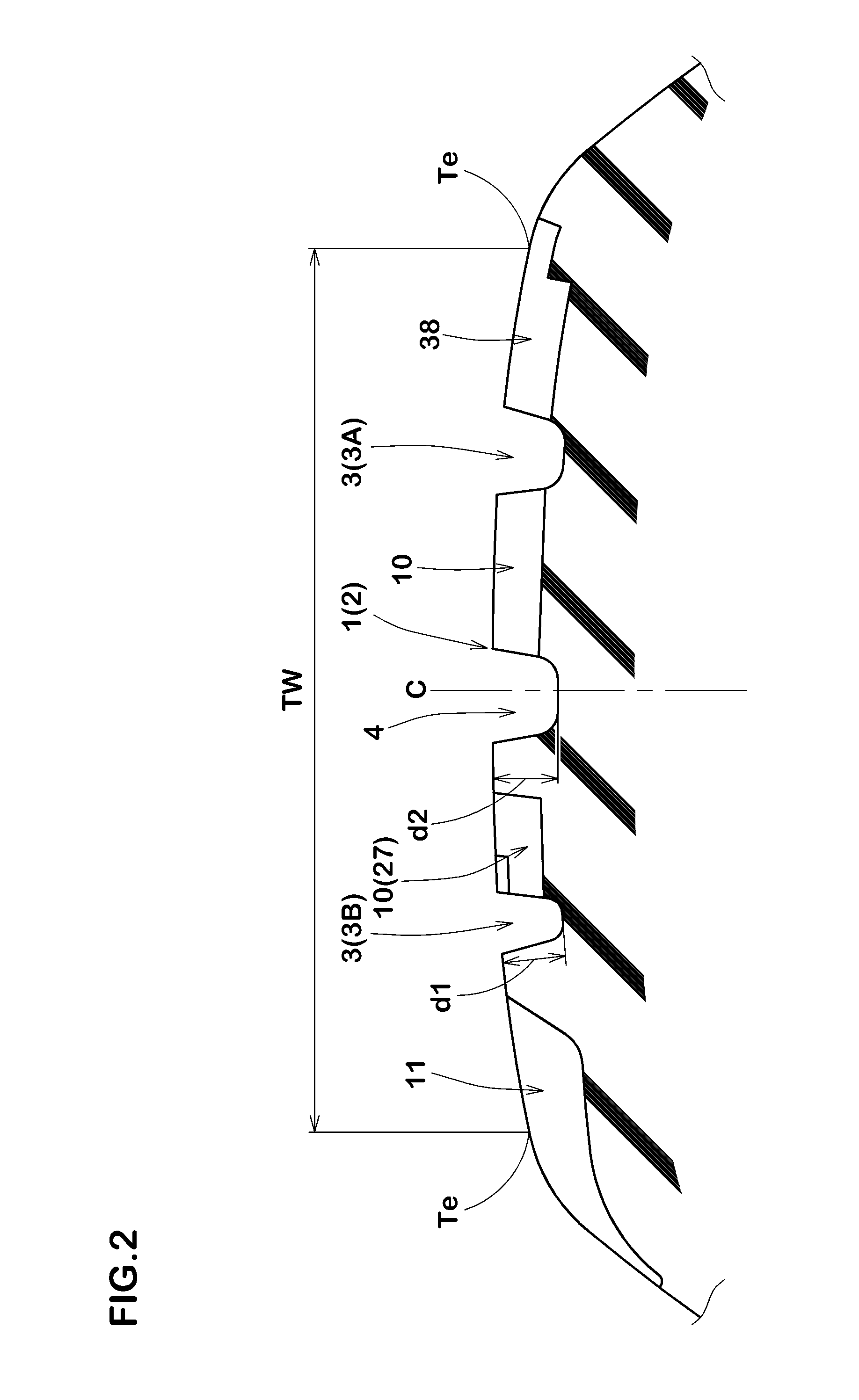Pneumatic tire
a pneumatic tire and groove technology, applied in the field of pneumatic tires, can solve the problems of affecting the stability of the steering wheel, the inability of the narrow groove to serve as drainage, and the occurrence of aquaplaning phenomena, so as to improve the steering stability, and maintain the width of the groove.
- Summary
- Abstract
- Description
- Claims
- Application Information
AI Technical Summary
Benefits of technology
Problems solved by technology
Method used
Image
Examples
working examples
[0128]Based on the tread pattern shown in FIG. 1, pneumatic tires of size 195 / 65R15 (rim size: 15×6J, tire pressure: 230 kPa) having specifications listed in Table 1 were experimentally manufactured and tested for the steering stability on dry roads, wet performance and noise performance.
[0129]In the pneumatic tire as comparative example 1, each middle narrow groove 10 was formed by the sipe-like narrow portion only, namely, the wide portion was omitted as shown in FIG. 10.
[0130]In the pneumatic tire as comparative example 2, each middle narrow groove 10 was entirely provided with a groove width of more than 2 mm and the wide portion was omitted as shown in FIG. 11.
[0131]The test tires were mounted on all wheels of a 2400 cc front-wheel-drive passenger car, and a test driver evaluated the steering stability during running on an asphalt-paved circuit course.
[0132]The results are indicated in Table 1 by an index based on comparative example 1 being 100, wherein the larger the index nu...
PUM
 Login to View More
Login to View More Abstract
Description
Claims
Application Information
 Login to View More
Login to View More - R&D
- Intellectual Property
- Life Sciences
- Materials
- Tech Scout
- Unparalleled Data Quality
- Higher Quality Content
- 60% Fewer Hallucinations
Browse by: Latest US Patents, China's latest patents, Technical Efficacy Thesaurus, Application Domain, Technology Topic, Popular Technical Reports.
© 2025 PatSnap. All rights reserved.Legal|Privacy policy|Modern Slavery Act Transparency Statement|Sitemap|About US| Contact US: help@patsnap.com



